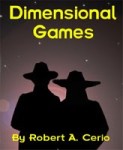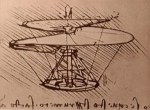Originally published March 31, 2013
As my readers know by now, I am a history junkie. The poem posted on the about page pretty much says it all. I believe there is much we have left behind that could teach us about what we have “yet to find.” My writing tends to explore both the past and the future and is, consequently, driven by research. For this reason I like to find fiction writers that do much the same thing because it helps me at least try to share the passion I have for my subjects with my readers. Learning how people build fictional worlds that attract an audience helps me see the parts that interest readers so I can arrange my factual material in an engaging way. My current interview target gave me some very interesting ideas. We will visit my thoughts after we hear from Rob Cerio (www.robcerio.com).
Steampunk World Building and the importance of knowing your history…
One of the trends in science fiction and fantasy literature is toward the rapidly growing genre known as “Steampunk.” For those that are unfamiliar with the genre, it’s a world of steam engines, Victorian sensibilities and fashions, and good old human courage. For those that write Science fiction, it’s also a nice departure from our usual, dreary dystopias and a walk into a brighter world. I have heard it described by many to be the shared universes of Jules Verne and H.G. Wells, or by others as visions of the future as envisioned by the 19th century. What most of these definitions fail to realize is that Steampunk at its core is an exercise in alternative history, and the best Steampunk authors do a lot of research into the Victorian era, and the technology and terminology of the time to give their worlds authenticity.
The key point of divergence between our real world and the imagined universe that most Steampunk stories use is the inventions of Charles Babbage. In 1822, Babbage proposed a device for completing complicated mathematics that he called a “Difference Engine.” The device was intended to replace error prone humans in the calculation of complex polynomial tables for engineering and science reference material. He later refined this design by the mid 1800s broadening its usage to an “Analytical Engine:” a very basic computer. The tremendous cost of building these intricate machines proved too high for him to continue his research. If he had it was entirely possible that the Computing Revolution of the mid 1970’s could have happened a hundred years earlier, in the “age of steam,” most notably before the development of the internal combustion engine.
Which leads to a neat question… “If modern computing had been applied to the refinement of the steam engine, would we have ever developed the internal combustion engine?” Somehow, I don’t think my uncle would appreciate his Corvette if he had to shovel coal into it every 300 miles.
Steampunk literature suggests that the great scientists and engineers of the Victorian era would have made tremendous advances with access to Babbage’s difference engines. We are asked to imagine a world where the Montfoglier Brothers used computers to turn their Ballooning experiments into practical airships… A world where Nikola Tesla was able to figure out the Unified Field theory 60 years before Einstein even got a job as a patent clerk… A world where Captain Nemo’s Nautilus was a practical machine instead of a flight of fancy.
As a result, to write confidently in the Steampunk genre, there is a lot of research you have to do, especially since readers of your fiction will absolutely call you on any errors in facts or style. (I had an editor return a story because a character used the term ‘patsy’ when the word wasn’t in popular usage until the 1920’s or so). On your reading list should be at least one of the works of Jules Verne, and of H.G. Wells, as well as some Mark Twain. The first two are to help you establish the conventions of the genre, the third to help you get the tone and jargon of an American of the period set into your mind. Depending on where you set your story, you may need to look into the real-world history of the country in question.
Many Steampunk stories are set in Great Britain and the United states, but the genre has been opening up to include the Far East, Africa, and the moon. This is great for authors that love writing in the genre, but I still cringe every time someone refers to it as “Space: 1899.”
In my case, the post-Civil War America that my short story “The Great Steamship Race” is set in is very much our current reality. Despite my embellishment of ironclad airships, the tensions in the post-war south and animosities that were held onto for generations are still in evidence. The race that takes place between my fictional airships Natchez and Robert E. Lee is based upon a real event and real historical figures that I discovered while researching other works. While some authors might look at the restrictions of using real history to frame an alternative history story as a chain binding them from telling interesting stories, I would say that they haven’t researched thoroughly enough. The Victorian era of both British and American history is rife with vibrant characters that truly shine when handed futuristic technology.
In addition to old fashioned library and internet research, there is quite a bit of real world research you can do to give your locations and Steampunk devices life. I am lucky enough to live in New Orleans, where one of the last steamships operates on the Mississippi River. By asking politely, I was able to get a behind the scenes tour of the engine and boiler rooms of the vessel, as well as a rare look at the wheelhouse. While not everyone has a steamboat in their backyard, there are steam locomotives that still run the rails in most states as tourism ventures. While much of what you learn by observing these machines in action may never make it onto the page, knowing the smell and feel of these amazing machines in action will help give your fictional versions life. I would also recommend trying on some Victorian era clothing… while I have never personally worn a corset, many of my female author friends insist that it was key to bringing a certain perspective to their heroine’s lives.
Me, I just settled for a top hat and a pair of aviator goggles.
So, the ideas that Rob has popped into my head? If you have ever watched Carl Sagan’s Cosmos series you may remember a segment where he mentions that the Greek renaissance of science and math that started somewhere around 570-495 BCE was squelched by Pythagoras and his mystics. If not for him then the first ship on the moon may have had a Greek name and it may have been centuries before the Americans made their landing. Maybe, maybe not. As a race we tend to fear those things that we do not understand. We give them the aura of mystery and magic and sometimes call them evil. Or, we do our best to control them. Some of those “mystics” Mr. Sagan was so perturbed with became the fathers of a more lasting modern science: Galileo, Copernicus, Newton, Einstein, Kepler, and on and on. There are several Jesuit priests in the mix as well. Many men, and women, discovered much about our universe while seeking the mind of God: and shared their passion by showing the world what they found. Sometimes it is a war between the mystics and the rational thinkers; sometimes it’s a matter of timing.
What I learned from a point of view such as Rob’s, is a way of inserting or taking away a concept that could change history in order to better understand the pivots of that history. For instance, what if Leonardo had gotten his whirly bird off the ground? Rob mentions Mark Twain as a source since he used this approach himself. If you haven’t read A Connecticut Yankee in King Author’s Court you should give it a try. An excellent example of “what if they had this!”
Thinking through the “could have beens” help us better understand the “what is now” and may help us build a better “what will be.” In the meantime, check out Rob’s website and see what he is up to. You can also let me know what you would like to learn about as we explore our history, our thoughts, our hopes and dreams.





No Comments